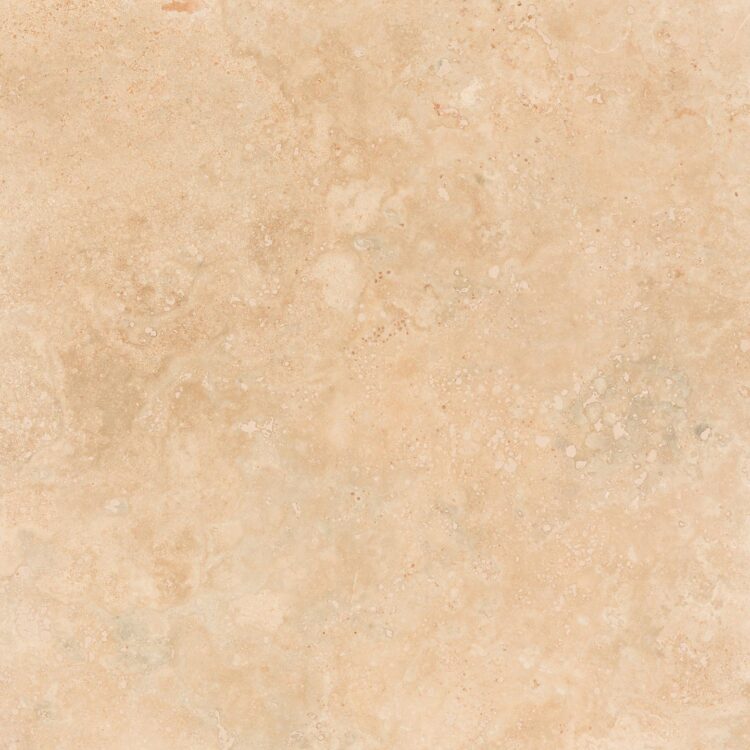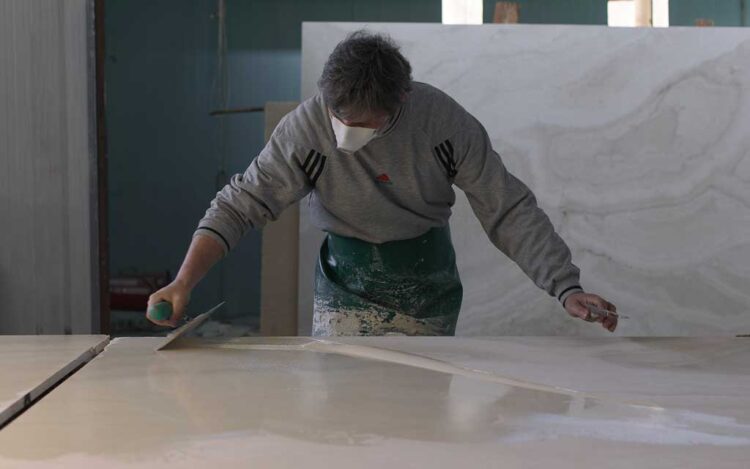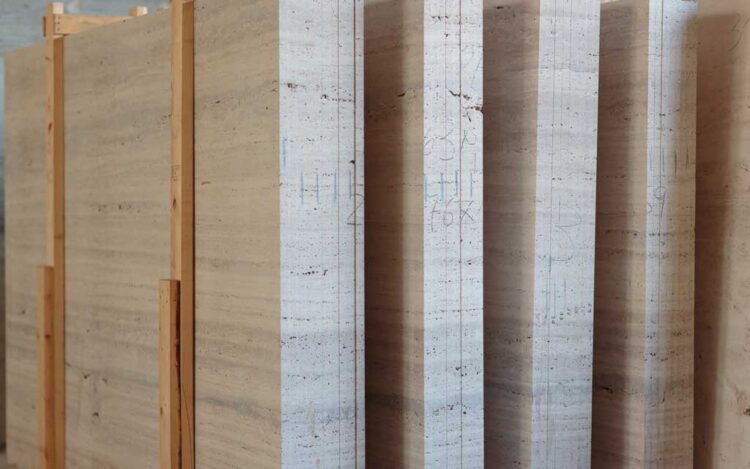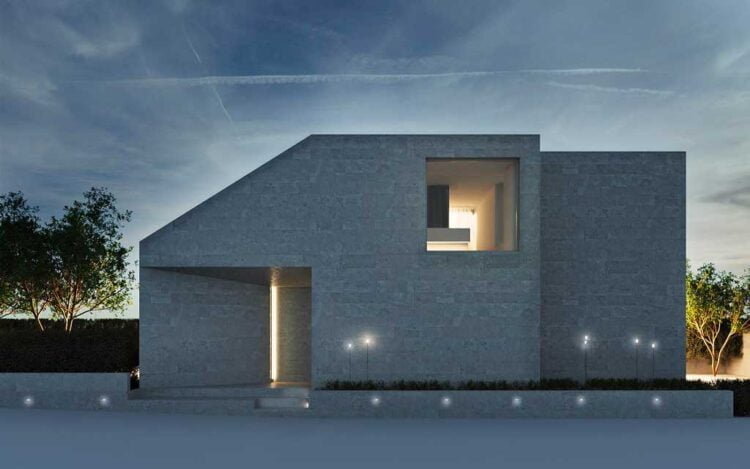Noce C Cross Cut Roman Travertine
Material: Roman Travertine
Origin: Tivoli, Italy
Availability: Blocks, Slabs, Cut to size
Suggested finishes:
saw cut, honed and stone color filled, honed and unfilled, brushed and unfilled, brushed and stone color filled, tumbled
Suggested processing:
stone profiles, mosaics and patterns
General description
Roman Travertine Noce C vein cut embodies a sublime representation of the power of Nature and the everlasting charm of natural stones. Like the walnut tree bark – hence the name of this genuine natural stone Travertino Romano “Noce” (walnut) – it displays a uniform background in light brown with shadows of different, darker tonalities.
Homogeneity is the hallmark of the cross cut processing of travertine where the cutting direction goes against the vein. Cross cut is particularly suited for projects where different natural stones are mixed and matched together.
Every architect or interior designer knows that the earth colors are what compose the flooring design par excellence. Roman Travertine Noce C embodies warm, pleasant and natural feelings. This natural stone conveys refinement, elegance and beauty. From homes to commercial spaces, such as hotels and restaurants, an experience that gives you a warm, fuzzy feeling.
The variety of decorations, colors and types of shades, and the modern treatments ensure the versatility you need to furnish every space according to style and needs of your customers, even the most peculiar ones. Roman travertine Noce C cross cut is adaptable to floors or walls and it is a winning choice every time. Utterly timeless and naturally stylish it is also hard wearing, versatile, and make any room feel more elegant and classy.
Technical Specifications Roman Travertine Noce
1) Flexural strength (UNI EN 12372)
1a) Load perpendicular to asiontropic planes
| Mean Fleaxural Strength | Standard deviation |
| 12,5MPa | 1,8Mpa |
1b) Load perpendicular to corners of asiontropic planes
| Mean Fleaxural Strength | Standard deviation |
| 13,1MPa | 2,0Mpa |
2) Freeze-thaw resistance (UNI EN 12371)
2a) Load perpendicular to asiontropic planes
| Mean Fleaxural Strength | Standard deviation |
| 8,3MPa | 0,9Mpa |
2b) Load perpendicular to corners of asiontropic planes
| Mean Fleaxural Strength | Standard deviation |
| 9,2MPa | 1,7Mpa |
3) Slip Resistance (UNI EN 1341)
| Mean Slip Resistance, Single Sample |
| 63 |
4) Abrasion Resistance (UNI EN 1341)
| Mean Abrasion Resistance |
| 21,4 |





